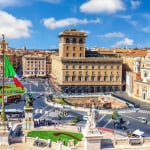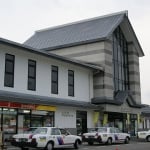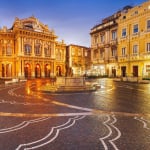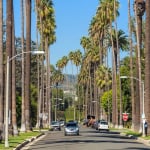Name: Mamiyado (間宮堂)
Address: 4-1 Soya Misaki, Wakkanai City, Hokkaido, Japan
Official Instagram:https://www.instagram.com/mamiyado.soya/
Opening Hours: 10:30 AM – 2:30 PM
![[Hokkaido] Souya Misaki Travel Guide | Must-See Spots at Japan’s Northernmost Point!](https://skyticket.com/guide/wp-content/uploads/2025/03/13850a6d-20221012_091933-680x510-1200x675.jpg)
[Hokkaido] Souya Misaki Travel Guide | Must-See Spots at Japan’s Northernmost Point!
Souya Misaki (Cape Soya) is the northernmost tourist destination in Japan that civilians can visit, located in Hokkaido, the northernmost prefecture of the country. From this cape, you can gaze across the Soya Strait (internationally known as the La Pérouse Strait) and see Cape Krilyon (Nishi-Notoro Misaki in Japanese) on Sakhalin (Karafuto), making it a prime location for border tourism.
In this article, we’ll introduce the highlights of Cape Soya, including must-see monuments and nearby shops worth visiting. We’ll also provide access information from Wakkanai Station and Wakkanai Airport, making it easier to plan your trip to Japan’s northernmost point!
table of contents
[x] close
[Hokkaido] Souya Misaki Travel Guide | Must-See Spots at Japan’s Northernmost Point!
Sightseeing at Cape Soya: Monuments and Facilities at Japan’s Northernmost Point

Cape Soya is the northernmost point in Japan that the general public can visit. Surrounding this area, you will find numerous "northernmost" landmarks, emphasizing its status as Japan’s furthest reach.
At Cape Soya, aside from the Monument of Japan’s Northernmost Point, several other monuments stand as historical and cultural markers. Let's explore these notable landmarks one by one.
◆ Monument of Japan’s Northernmost Point
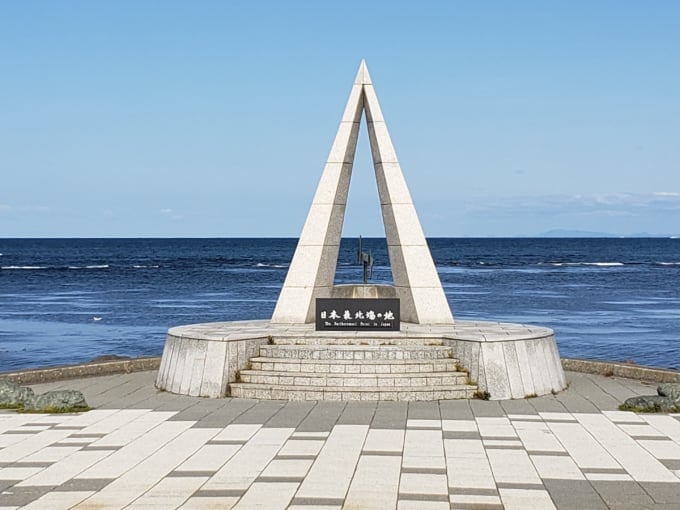
One of the most popular tourist attractions at Cape Soya, the Monument of Japan’s Northernmost Point, is engraved with the words: "日本最北端の地 The northernmost point in Japan."
This location marks the northernmost place accessible to civilians, excluding the Northern Territories. Beyond this point lies the Soya Strait (also internationally known as the La Pérouse Strait). The monument itself features a striking triangular pyramid design, symbolizing the North Star.
Beside the monument, you will also find a bronze statue of Mamiya Rinzō, an Edo-period geographer. He journeyed from Cape Soya to Sakhalin (formerly known as Karafuto) and discovered that Sakhalin is an island. His name is immortalized in the Mamiya Strait (known in Russian as the Tatar Strait).
◆ Monument of the Song "Sōya Misaki"

At Cape Sōya, you’ll find a monument dedicated to the song "Sōya Misaki," composed by the renowned Japanese musician Toru Funamura. This song became widely popular after being performed by Da Capo, The Bonny Jacks, and Yoko Seri, among other artists. The very first rendition was sung by Mari Kuroki, and later, Hiroko Chiba’s version gained prominence.
A special feature of the monument is a button that plays the song "Sōya Misaki" sung by Hiroko Chiba when pressed, allowing visitors to immerse themselves in the nostalgic melody.
It is said that Funamura composed this song while reminiscing about his childhood friend, a girl who went missing after moving to South Karafuto (now Sakhalin) when it was part of Japan.
◆ A View of Sakhalin's Cape Krilion (Nishinotoro Misaki)
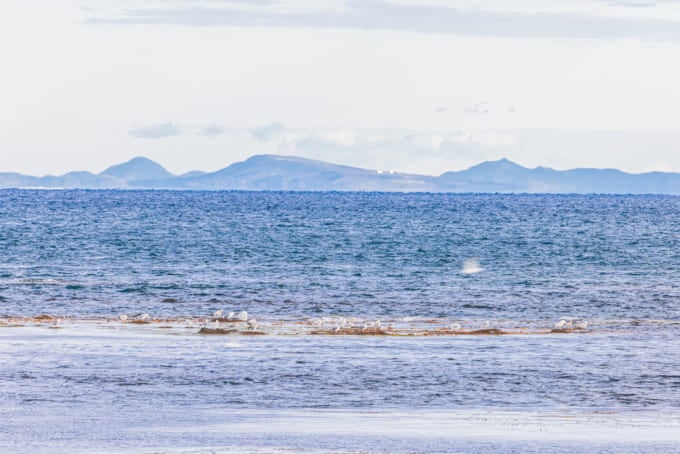
On a clear day, visitors to Cape Sōya can catch a breathtaking view of Cape Krilion (formerly Nishinotoro Misaki) in Sakhalin. This is one of only three places in Japan where you can gaze upon a foreign land from Japan, the others being Waniura in Tsushima and Kubura in Yonaguni Island.
The expansive sea and distant mountain ranges of Sakhalin create a picturesque scene, making this spot a must-visit for nature lovers and history enthusiasts alike.
◆ Monuments Around Cape Sōya
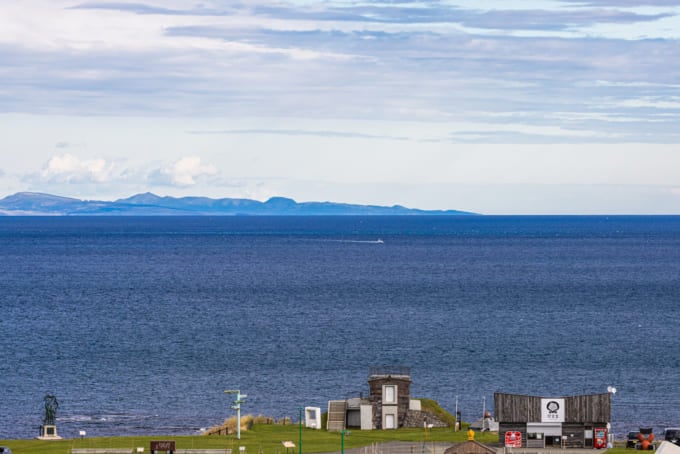
Cape Sōya is home to several significant monuments, each carrying deep historical and cultural meaning. As you explore the area, you'll find sculptures, plaques, and memorials dedicated to various events and figures related to the cape’s history.
Each monument tells a unique story, enhancing the experience for travelers interested in Japan’s northernmost point and its historical connections to Sakhalin.
◆ Akebono Statue
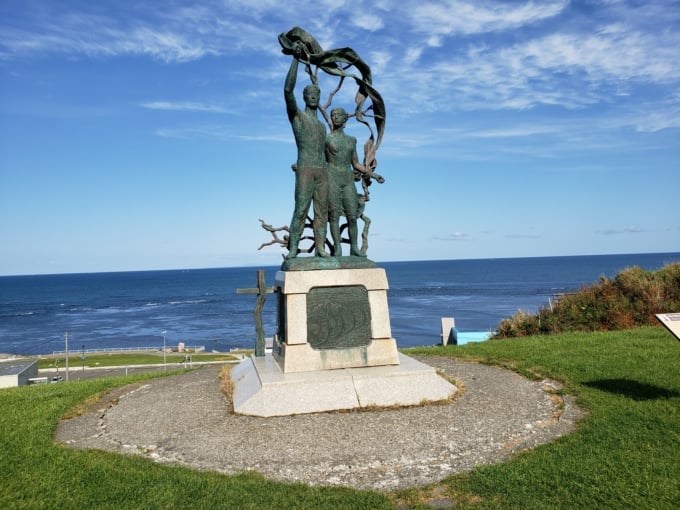
The Akebono Statue was erected to commemorate two major milestones in Hokkaido’s dairy industry—the production of over 1 million tons of milk and the increase of dairy cattle to over 500,000 head. This bronze statue symbolizes the "Dawn of Dairy Farming in Northern Hokkaido."
◆ La Pérouse Commemorative Monument

The La Pérouse Commemorative Monument honors the French explorer Jean-François de Galaup, Comte de La Pérouse, who was the first Westerner to navigate through the Sōya Strait. While this strait is known as Sōya Kaikyō in Japan, it is commonly referred to internationally as La Pérouse Strait in recognition of his journey.
Although La Pérouse and his ships vanished during an expedition to Oceania, one of his crew members disembarked earlier in Petropavlovsk-Kamchatsky, a town in Russia’s Kamchatka Peninsula. This crew member managed to bring back valuable navigation records to France. Additionally, just before La Pérouse's disappearance, he encountered a British fleet in Sydney, Australia, where he handed over more expedition records, ensuring that his contributions to exploration were preserved in history.
◆ Naval Watchtower
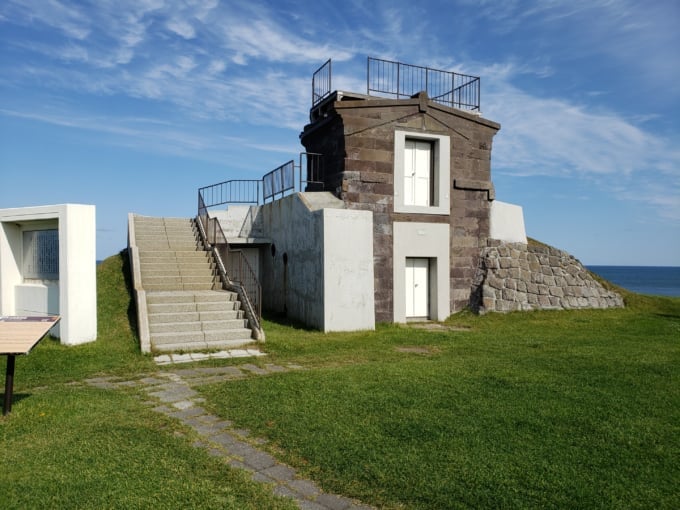
The Naval Watchtower was constructed to monitor the Sōya Strait, which became the Japan-Russia border following the Sakhalin-Kuril Exchange Treaty. This structure, dating back to the Meiji era, is one of the rare historic buildings still standing in the northernmost region of Hokkaido.
◆ The Bell of World Peace
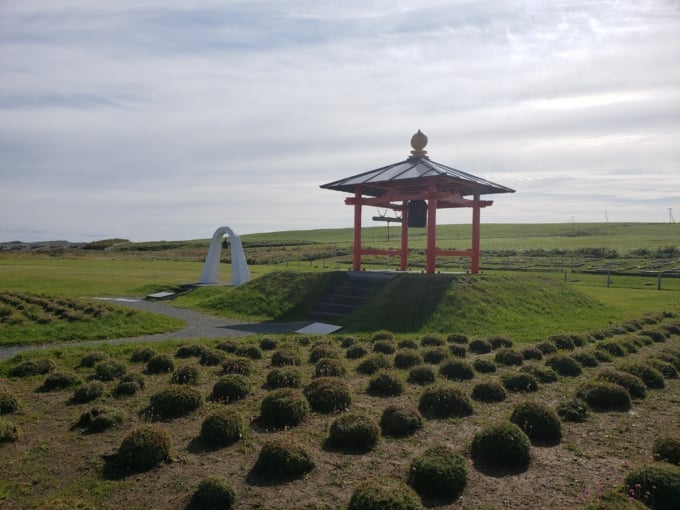
The Bell of World Peace was cast using coins and medals collected from 81 countries worldwide as a symbol of global harmony. In Japan, there are two Bells of World Peace, one of which is located in Ishigaki City, Okinawa. The bell in Sōya, Hokkaido, continues to ring out messages of peace, and beside it stands the "Child-Rearing Bell", watching over the land of Sōya.
◆ Memorial for Fallen Naval Soldiers in the Sōya Sea
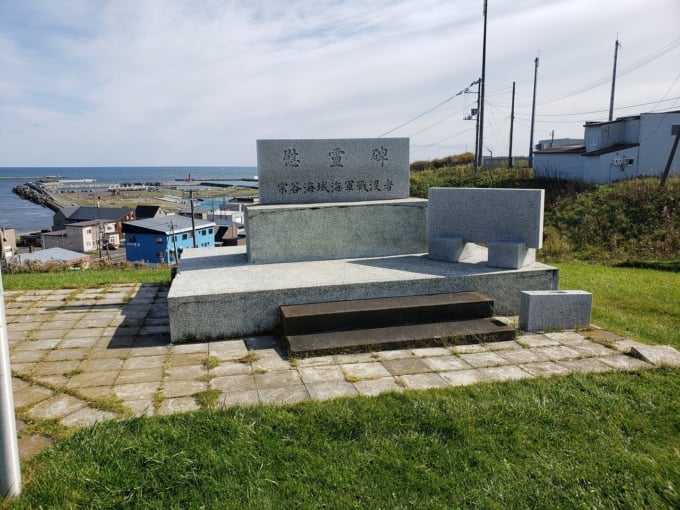
During World War II, numerous ships and submarines were sunk in the Sōya Strait. The Memorial for Fallen Naval Soldiers in the Sōya Sea was built to honor the crew members who lost their lives in these tragic maritime battles.
◆ Monument of Peace – Honoring the USS Wahoo

The Monument of Peace was erected in 1995 through a Japan-U.S. collaboration to commemorate the USS Wahoo, an American submarine that sank in the Sōya Strait during World War II, as well as the five Japanese merchant ships (totaling 696 victims) that the Wahoo had sunk in the Sea of Japan. It is a rare and historically significant memorial, symbolizing reconciliation between Japan and the United States.
◆ Tower of Prayer – Memorial for the Korean Air Flight 007 Incident
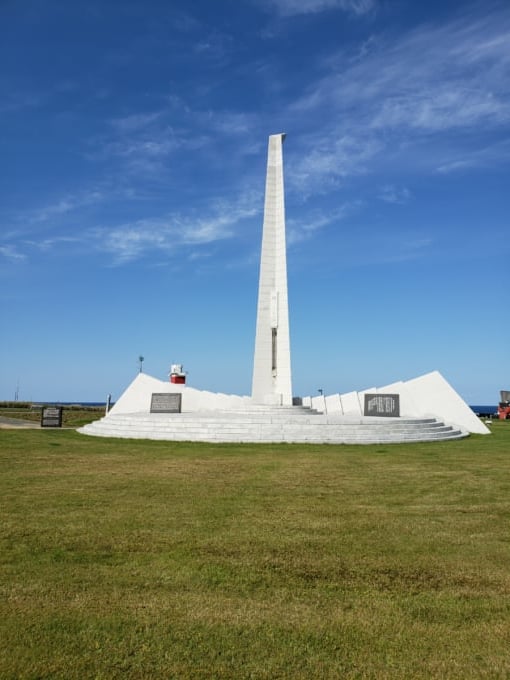
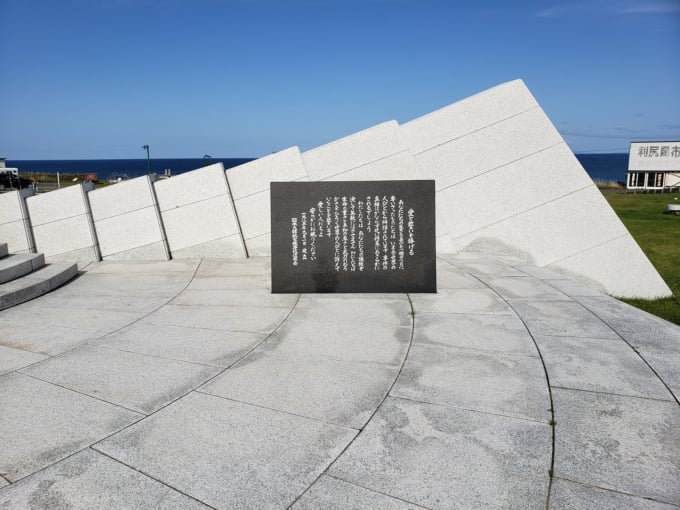
The Tower of Prayer is a memorial dedicated to the victims of the Korean Air Flight 007 incident, which occurred on September 1, 1983, near Moneron Island, off Sakhalin. The names of each of the 269 victims are engraved on the monument, serving as a solemn reminder of the tragedy.
The tower stands 19.83 meters tall, symbolizing the year of the incident. Its 16 wings represent the nationalities of the victims, while 269 white granite plates honor each individual who lost their life. This monument is one of the most significant memorials located within Cape Soya Park (Sōya-misaki Kōen).
Surrounding the memorial, Armeria flowers bloom in tribute to the souls of the deceased, offering a place of remembrance and peace.
◆ Miyazawa Kenji Literary Monument

The Miyazawa Kenji Literary Monument commemorates the time when Miyazawa Kenji, a renowned Japanese writer and poet, visited Sakhalin (formerly Karafuto, then under Japanese rule). His visit was for two reasons: to help his students find employment and to honor the memory of his late sister, Toshi.
During his journey, he passed through the Soya region, where he boarded the Wakkanai-Korsakov ferry (Chihaku Renraku-sen). His experiences from this trip were later expressed in a poem titled "Soya Elegy" (宗谷挽歌). This monument was built to commemorate this literary work and his connection to the region.
◆ Sōya Hills and the "White Path"
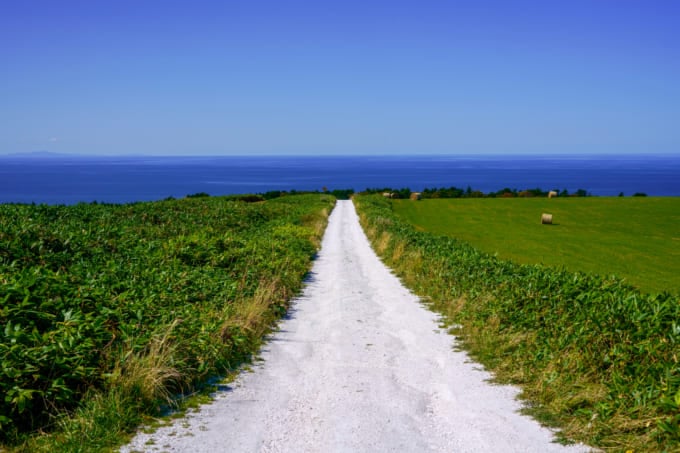
Located near Cape Sōya, Sōya Hills is one of Japan’s rare periglacial landforms, featuring vast, gently rolling hills formed during the Ice Age, when extreme cold shaped the terrain. This makes it a geologically significant and unique location.
The scenic landscape is home to freely grazing cattle, creating a picturesque and peaceful atmosphere. However, the highlight of this area is the famous "White Path," a walking trail paved with crushed shells. The contrast of the pure white road against the deep blue sky and lush green grass makes it an Instagram-worthy spot, especially popular among young female travelers.
◆ Benten Island – The True Northernmost Point of Japan
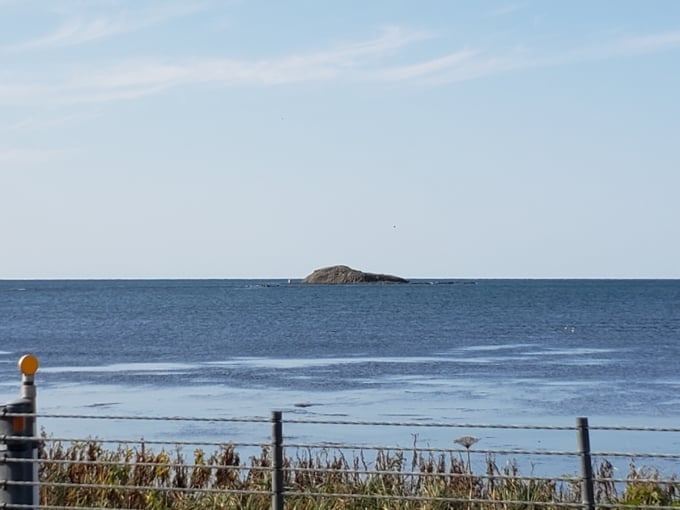
While Cape Sōya is the northernmost point that civilians can access, there is actually a more northern island that remains off-limits to the public. This is Benten Island, along with Hira Island, located about 1.2 km northwest of Cape Sōya. Benten Island holds the title as the northernmost location in Wakkanai City.
These islands can be seen from Cape Sōya, and if you use a compass, you can confirm that they are indeed farther north than the cape. The best viewing spot for Benten Island is near the Sannai bus stop, which is closer to the city and the airport.
The island is named Benten after a small shrine dedicated to Benzaiten, one of the Seven Lucky Gods in Japanese mythology.
◆ Mamiya Rinzō’s Crossing to Sakhalin
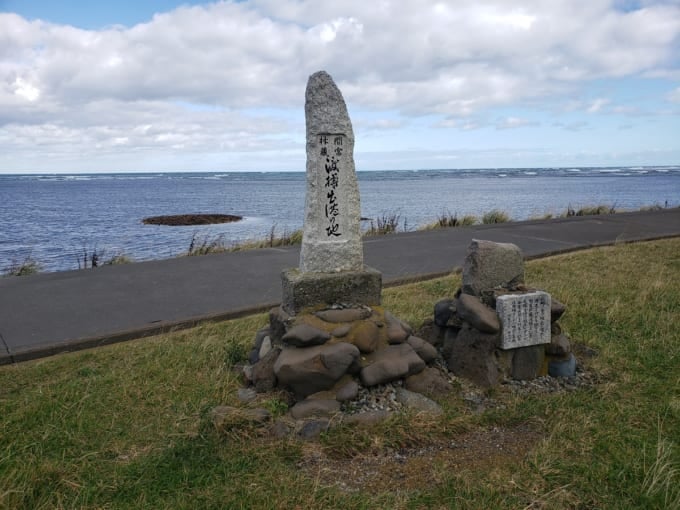
On the western side of Cape Sōya, you’ll find the historical Mamiya Rinzō Crossing Site. This is where Mamiya Rinzō, a legendary Japanese explorer, set sail to Sakhalin (formerly known as Karafuto). At the time, Sakhalin was largely uncharted territory, and together with his crew, Mamiya confirmed that Sakhalin was an island.
His expeditions extended further to the Amur River in modern-day China, where he made contact with Qing Dynasty officials. His detailed reports became crucial historical records, providing valuable insights into the northern territories.
Must-Visit Shops When Touring Cape Soya
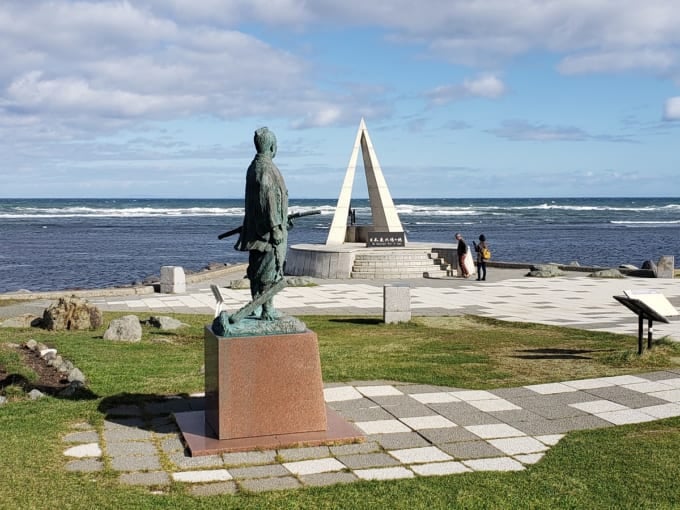
Cape Soya is home to a variety of unique shops, including Japan’s northernmost store, Kashiwaya, and the famous ramen restaurant Mamiyado. If you're visiting Cape Soya, be sure to stop by these must-visit spots!
◆ If You're Hungry, Try Mamiyado’s Shio Hotate (Salted Scallop) Ramen
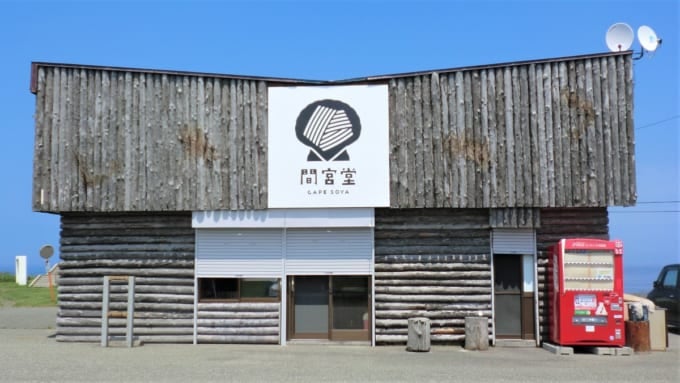
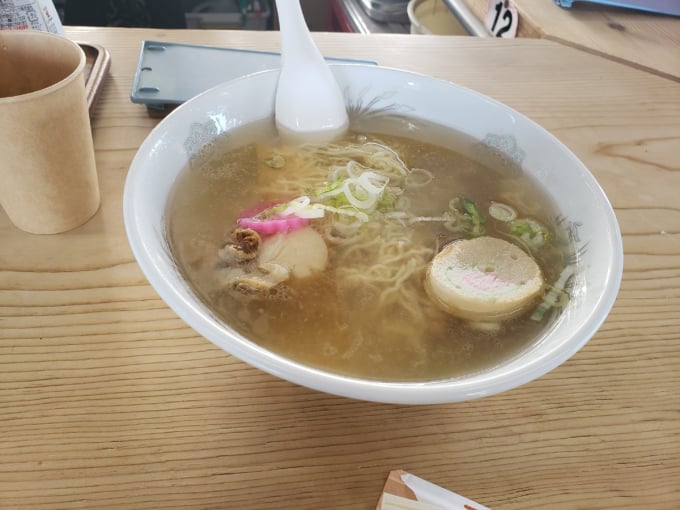
When hunger strikes, head to Mamiyado, located near Soya Cape Park, and enjoy their famous Shio Hotate Ramen. Renovated in 2022, Mamiyado continues to serve its beloved light yet flavorful seafood-based ramen, packed with the umami of fresh scallops. This exclusive bowl of ramen is a must-try dish you can only experience at Cape Soya!
Note: Open seasonally from spring to late October
◆ Shop for Exclusive Souvenirs at Sōya Cape’s "Kashiwaya"
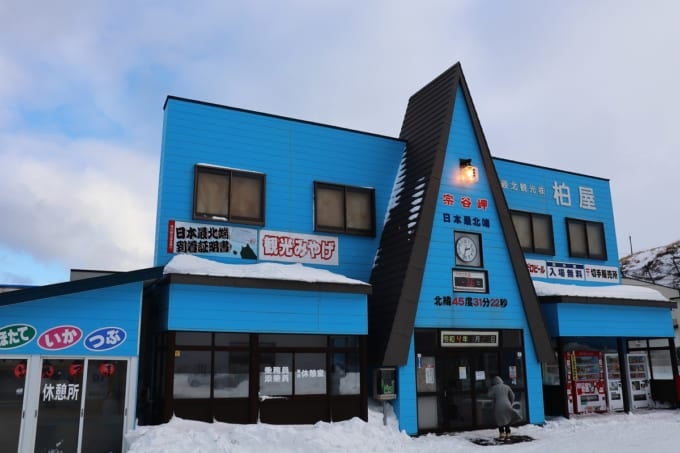
At Kashiwaya, the northernmost souvenir shop in Japan, you can purchase a "Northernmost Arrival Certificate" for just 100 yen, complete with a date stamp to commemorate your visit to Sōya Cape. The shop is packed with exclusive souvenirs that capture the essence of Sōya Cape, making it a perfect place to find memorable keepsakes from your trip. With so many unique items available, you might find yourself wanting to buy them all!
◆ Get a Special Postmark at Japan’s Northernmost Post Office
At Sōya Cape Post Office, Japan’s northernmost post office, you can get a special pictorial postmark ("fūkeiin") by affixing a stamp worth 63 yen or more to a postcard, letter, or any paper and bringing it to the counter. The post office operates only on weekdays from 9:00 AM to 5:00 PM. This unique postmark makes a great keepsake, or you can send the stamped postcard to someone as proof that you’ve been to Japan’s northernmost point!
These pictorial postmarks are available at post offices throughout Japan, and since each location has its own unique design, many people enjoy collecting them as a hobby.
Additionally, if you visit on a weekday and bring your bank passbook, you can ask for a commemorative rubber stamp ("gomu-in") at the savings counter. While travelers may not usually carry their passbooks, some enthusiasts enjoy collecting these stamps from post offices nationwide as part of a unique hobby called "postal savings travel" (ryokō chokin).
◆ Japan's Northernmost Convenience Store: Seicomart Tomiiso Branch
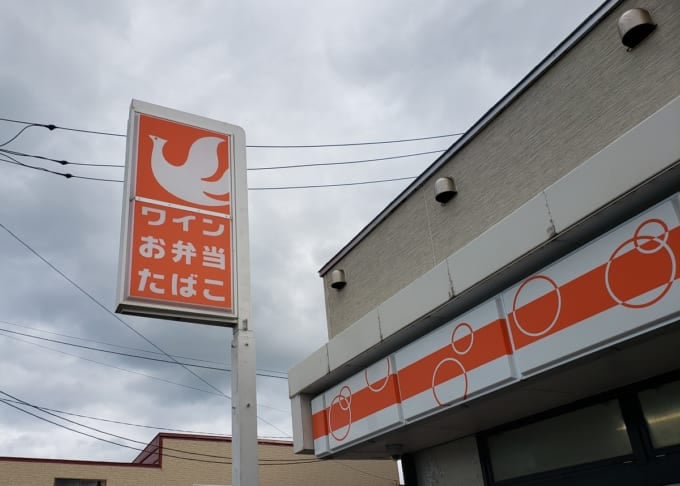
The northernmost convenience store in Japan isn’t FamilyMart, 7-Eleven, or Lawson—it’s Seicomart, a Hokkaido-based chain. The Seicomart Tomiiso store may look like a regular convenience store, but it offers a wide variety of products, from bento meals and canned coffee to daily essentials. Located on the route from Wakkanai City and Wakkanai Airport to Cape Soya, it is a popular stop for drivers and bikers. Travelers will be pleasantly surprised to find that even at Japan’s northernmost convenience store, they can easily purchase essential travel items.
Name: Seicomart Tomiiso Branch
Address: Tomiiso, Soya Village, Wakkanai City, Hokkaido
Official Website:https://store.seicomart.co.jp/detail.php?nbr=21473
How to Reach Cape Soya by Rental Car or Bus

Cape Soya is so far from major cities that some travelers prefer to take a flight from Sapporo. Wakkanai Airport is about 1 hour from Sapporo/New Chitose Airport and 1 hour 50 minutes from Tokyo/Haneda Airport. If traveling by train, it takes around 5 hours via limited express from Sapporo Station to Minami-Wakkanai Station, the nearest railway station to Cape Soya.
While renting a car is the most convenient way to travel from Wakkanai City or Wakkanai Airport to Cape Soya, local buses are also available. Let’s explore both transportation options in detail.
◆ Access by Car
https://maps.google.com/maps?ll=45.452706,141.858478&z=11&t=m&hl=ja&gl=JP&mapclient=embed&saddr=%E7%A8%9A%E5%86%85%E7%A9%BA%E6%B8%AF%E3%80%81%E3%80%92098-6643%20%E5%8C%97%E6%B5%B7%E9%81%93%E7%A8%9A%E5%86%85%E5%B8%82%E5%A3%B0%E5%95%8F%E6%9D%91%E5%A3%B0%E5%95%8F%EF%BC%96%EF%BC%97%EF%BC%94%EF%BC%94&daddr=%E5%AE%97%E8%B0%B7%E5%B2%AC%E3%80%81%E3%80%92098-6758%20%E5%8C%97%E6%B5%B7%E9%81%93%E7%A8%9A%E5%86%85%E5%B8%82%E5%AE%97%E8%B0%B7%E5%B2%AC%EF%BC%93&dirflg=d
From Wakkanai city center, take National Route 40 eastward and turn left at "Shiomi 4-chome & 5-chome." Then, simply follow National Route 238 towards Hamatonbetsu. National Route 40 passes by Wakkanai Airport, making it convenient for travelers renting a car from the airport. If you're using a rental car, take National Route 238 for an easy drive.
◆ Access by Bus
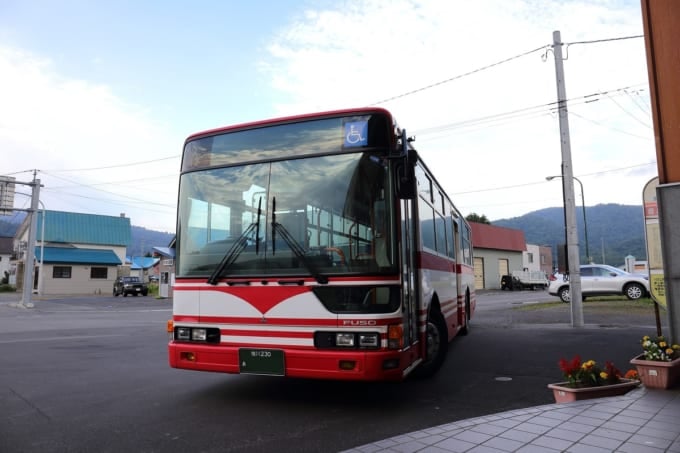
For those traveling by local bus from Wakkanai city center, you can take a bus from the Wakkanai Station Bus Terminal (about 50 minutes) or from Minami-Wakkanai Station (Minami Station Bus Stop), which takes approximately 32 minutes.
There is no direct bus from Wakkanai Airport to Cape Soya, but you can reach a bus stop called "Driving School-mae," which is about 2 km from the airport, where buses to Cape Soya depart.
Alternatively, take the airport shuttle bus and transfer at "Koetoi" Bus Stop to a bus heading towards Cape Soya, Hamatonbetsu, and Otoineppu Station.
Important: The last bus from Cape Soya back to Wakkanai city departs at 14:55, so plan accordingly to avoid missing it.
During the summer, the "Japan's Northernmost Active Bus" operates, providing direct access from Wakkanai Airport to Cape Soya, conveniently connecting with flights from Tokyo.
For more details, check the Soya Bus official website.
◎ Summary
The northernmost point of Japan, Cape Soya, is surrounded by the rolling hills of the Soya Hills. On a clear day, visitors can admire the breathtaking contrast of the Sea of Japan and the Sea of Okhotsk from the famous Shiroi Michi (White Road). Since you’ve made it to the edge of Japan, be sure to create unforgettable travel memories on your journey!
RELATED ARTICLES
REGIONS
CATEGORIES
FEATURED ON hokkaido
-
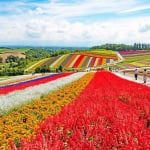
Where will you go for the summer vacation? Introducing recommended spots for domestic travel
-

Hidden Tourist Spot in Sapporo! Exploring the Charm of the Atmospheric Hokkaido University
-
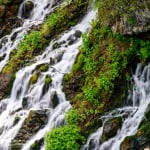
[Biei Town] Tourist Information for Shirahige Falls! Directions & Parking Info
-
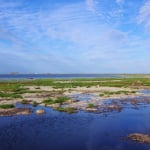
[Eastern Hokkaido] Notsuke Peninsula Travel Guide | What is This Extraordinary Scenic Spot?
-
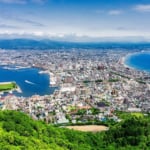
The 5 most breathtaking views in the enchanting tourist destination of Hakodate! Introducing the most photogenic spots
MOST POPULAR ON hokkaido
-
 1
1Doha: Must-see Attractions in the Capital of Qatar
-
 2
2Toronto: 10 Things to do in this Picturesque Canadian City
-
 3
3Amarillo: A City Famous for It’s Amazing Canyons, Great History and Music
-
 4
4South Korea: Dazzling Scenery, Rich Culture and Fascinating History
-
 5
5Kuwait: A Country in Middle East Asia Famous for Hot Sand Dunes and Stunning Cityscape

